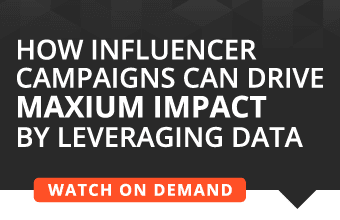One of the most popular questions for up and coming online influencers is, “how many followers do I need to be an influencer?” They’re looking for some metric to work toward in order to determine when they might become successful pushing brands or creating trends online or on social media for influencer marketing.
Here’s the thing: while there are numbers, that’s not the only metric that matters. In many cases, it’s not even the most telling metric to measure influence. But, it is a good place to start. One of the hottest marketing trends in digital media right now is the concept of the micro-influencer.
There is the influencer who has somewhere between a few hundred and 20,000 followers, with 200 being the absolute floor in most cases. While it’s true that influencers with huge numbers can drive serious traffic and deliver excellent results for big brands, those influencers also tend to be very expensive. Strictly, from a financial standpoint, it can be advantageous for brands to bring in a number of micro-influencers. They could, literally, be buying more influence for less money.
Why engagement matters for influencers
How is it that someone with a few hundred or maybe a thousand followers might be a good investment for a brand interested in bringing in some influencers to help with their marketing? That all comes down to engagement, which is another key metric to use when determining how many followers makes a person an effective influencer or on social media.
When a brand finds an influencer with a high engagement rate, they’ve found a person whose tribe is very connected and eager to keep that connection growing. This is proverbial marketing gold. An influencer with fewer followers, who engages early and often with those followers on a regular basis, is likely to have more influence than a more popular influencer whose engagement is less frequent, less personal, or less connective.
Influencer as a real job
Even some lawmakers are starting to notice the impact of influencers in the marketplace, so they are baking-in regulations to define influencer marketing as a real job. Given this trend, aspiring influencers should consider the legal ramifications of their work. For example, the UK’s Advertising Standards Agency recently ruled that having 30,000 or more followers on Instagram makes a person a celebrity. The ruling came after a British lifestyle blogger published a sponsored image featuring a specific sleep aid made by Sanofi. The drug maker argued that the posting was not, in fact, a celebrity endorsement, saying that this blogger, with 32,000 followers, did not rise to the level of (their example) David Beckham, 55 million followers, or Stephen Fry, at 359,000.
This argument was dismissed by the ASA, which said the blogger had “the attention of a significant number of people.” While “significant” isn’t any kind of number, it does have some weight to it—and that’s the point. The breadth and depth of influence matters, because deeper influence leads to faster and better consumer engagement.
That is the most important metric: engagement and follow through—do a significant number of people make decisions based on the recommendation of another person, or do these people change their buying habits based on this person’s say-so. If the answer is yes, that’s an influencer.








